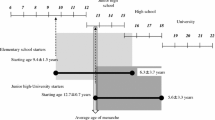Abstract:
To clarify the effects of habitual volleyball exercise on bone in women during the menopausal periods, we measured bone mineral densities (BMDs) of the lumbar spine, calcaneus and tibia every 12 months for 2 years and estimated factors related to the baseline values and annual loss rates. Forty Japanese female volleyball players 42–62 years of age, who had belonged to the district non-professional club for more than 10 years on average, were recruited. Twenty women had regular menstruation at the start, but 7 underwent menopause during the study. Fifty-nine healthy women who did not participate in habitual exercise, but were otherwise comparable with the players, were recruited as the controls. The lumbar and calcaneus BMDs were measured by dual-energy X-ray absorptiometry (DXA), and both the volumetric BMDs and cross-sectional geometry at the diaphysis of the tibia were measured by peripheral quantitative computed tomography. The baseline BMDs of all measured sites and the values of the cortical area and moment of inertia of the tibia in the players were significantly higher than the values in the control women. In the peri- and postmenopausal players, the baseline values of the lumbar and calcaneus BMDs related to total years of participating in regular exercises during adulthood including volleyball (TYE), body mass index (BMI) and years since menopause (YSM). Tibia cortical area and moment of inertia values related to TYE. Annual bone loss rates in the tibia and calcaneus of players were significantly smaller than those values in the controls. However, the bone loss rates in the lumbar spine did not differ significantly between the groups. The bone loss rate in the calcaneus was significantly related to the current number of training hours per week and YSM. The rate of bone loss in the tibia was related to BMI. These data indicated that the total number of years participating in exercise activity during adulthood have positive effects on lumbar and calcaneus BMDs and the cortical structure of the tibia. Habitual volleyball exercise apparently did not alleviate the menopause-related bone loss in the lumbar spine.
Similar content being viewed by others
Author information
Authors and Affiliations
Additional information
Received: 3 September 1999 / Accepted: 10 July 2000
Rights and permissions
About this article
Cite this article
Ito, M., Nakamura, T., Ikeda, S. et al. Effects of Lifetime Volleyball Exercise on Bone Mineral Densities in Lumbar Spine, Calcaneus and Tibia for Pre-, Peri- and Postmenopausal Women . Osteoporos Int 12, 104–111 (2001). https://doi.org/10.1007/s001980170141
Issue Date:
DOI: https://doi.org/10.1007/s001980170141




